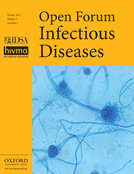Posted on February 03, 2015
Source: Open Forum Infectious Diseases

Kojo Amoakwa, Neil A. Martinson, Lawrence H. Moulton, Grace L. Barnes, Reginah Msandiwa and Richard E. Chaisson
Tuberculosis is the leading cause of death among adults infected with human immunodeficiency virus (HIV), and rates of tuberculosis remain high even after preventive therapy. Among 908 HIV-infected adults in a trial of preventive treatment, we found self-reported alcohol consumption, low baseline CD4 count, high baseline viral load, and tuberculin skin test size >15 mm as independent risk factors for incident tuberculosis.
Tuberculosis is the leading cause of death among persons infected with human immunodeficiency virus (HIV) especially in developing countries [1]. A meta-analysis of recent clinical trials showed that isoniazid preventive therapy reduced the risk of active tuberculosis by 64% among adults infected with HIV, as demonstrated by a positive tuberculin skin test (TST) [2].
The Soweto/Johns Hopkins Novel Tuberculosis Prevention Regimens Trial showed that shorter directly observed combination regimens of rifapentine and isoniazid (once weekly for 12 weeks), and rifampin and isoniazid (twice weekly for 12 weeks) had similar efficacy as isoniazid (daily for 6 months) in preventing a combined outcome of tuberculosis or death in HIV infected adults with latent tuberculosis infection [3]. In this analysis, we studied risk factors for developing incident tuberculosis after receipt of short-term preventive therapy in this population of HIV-infected adults to identify sociodemographic and potentially modifiable clinical and behavioral variables associated with progression to tuberculosis.